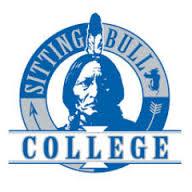 |
Canku Ota
|
 |
|
(Many Paths)
|
||
|
An Online Newsletter
Celebrating Native America
|
||
|
January 2017 - Volume
15 Number 1
|
||
|
|
||
|
Sitting Bull College
Master's Program First In North Dakota |
||
|
by Jessica Holdman -
Bismarck Tribune
|
||
 FORT
YATES, N.D. —Sitting Bull College in Fort Yates, N.D., has paved
the way for master's degree programs at North Dakota tribal colleges
— its latest program focuses on studies on water quality. FORT
YATES, N.D. —Sitting Bull College in Fort Yates, N.D., has paved
the way for master's degree programs at North Dakota tribal colleges
— its latest program focuses on studies on water quality.
SBC Agriculture Division Director Gary Halvorson said SBC is the first tribal college to offer a master's degree in the state and, to Halvorson's knowledge, the first nationwide to offer it in the sciences. The tribal college of the Standing Rock Sioux tribe was started in 1973. Inspired by that effort at Sitting Bull College, United Tribes Technical College Vice President of Academic Affairs Lisa Azure said the Bismarck campus now plans to offer a master's degree in education within the next three years. SBC's two-year master's program actually started in fall 2014, graduating its first students this past spring. For the school's next round of the master's program, four applied and two more students were accepted. The focus of the program is on water quality. Halvorson said the first graduates have both gotten good jobs — one working as the school's lab director as he prepares to leave for a job with the Natural Resources Conservation Service, the other working for an environmental consulting company in Texas. Bruz Van Dusen of McLaughlin, S.D., was finishing a four-year degree when he heard a rumor about the master's program getting started. "I thought it couldn't hurt," he said. For his master's thesis, he examined lead concentrate in river sediment near highway bridges. His cohort studied mercury in river sediments. After many lakes in the area were closed to fishing due to high mercury content, the student wanted to find out if the cause for high mercury in the lake fish was getting into the river, too, Halvorson said. Van Dusen likes the outdoors. It's what drew him to environmental science. He said the master's program opened his realm of learning and knowledge base. When he starts with NRCS, he'll be working on soil conservation near Selfridge, a job he never imagined himself having before now. He said the master's program has "rounded me out for the job." Like many students, Saul Bobtail Bear, of Little Eagle, S.D., entered college unsure of what he wanted to do until he took an introduction to environmental science class. Now, he's a junior preparing to start his second undergraduate research project. His first project was a summer research program studying Costa Rican fish species. Bobtail Bear works in the lab as Van Dusen's lab assistant. He said he would walk by and see Van Dusen in the lab and the research drew his interest. Now, he's considering pursuing a master's degree as well. Halvorson said 10 percent of the roughly 300 students enrolled at the college are in the environmental science program. The degree involves a lot of hands-on work, which he thinks students appreciate. Students do two research projects as undergraduates and Halvorson's analytical chemistry class familiarizes students with the lab's equipment to measure fluoride, mercury, magnesium, sodium, potassium, trace metals and numerous other elements. Van Dusen said he has noticed interest in the program from quite a few of his fellow students. In fact, the program had been enough to draw him from a tribal college in Arizona to North Dakota to study. SBC sought master's accreditation from the Higher Learning Commission in education, business and was approved for accreditation in environmental science. There are five instructors with doctoral degrees in the environmental science department at the college, which helped make accreditation possible. Halvorson said it has put SBC more into the research realm — a big step that "doesn't just happen overnight." He said now the school is in talks with NASA about getting an air quality station at the college so the agency can record measurements on climate change and the ecology of the area. The agency doesn't have a station in this region, Halvorson said. Halvorson said SBC hopes to diversify its master's offering in the coming years with a new area of focus. He expects the master's program to keep growing as other students see it giving graduates "a leg up on getting a job." The school is aiming to eventually have a six-student program and start a new class of master's students every year instead of every two years. |
|
|
|
|
||
|
|
||
| Canku Ota is a free Newsletter celebrating Native America, its traditions and accomplishments . We do not provide subscriber or visitor names to anyone. Some articles presented in Canku Ota may contain copyright material. We have received appropriate permissions for republishing any articles. Material appearing here is distributed without profit or monetary gain to those who have expressed an interest. This is in accordance with Title 17 U.S.C. Section 107. | ||
|
Canku Ota is a copyright ©
2000 - 2017 of Vicki Williams Barry and Paul Barry.
|
||
 |
 |
|
|
The "Canku
Ota - A Newsletter Celebrating Native America" web site and
its design is the
|
||
|
Copyright ©
1999 - 2016 of Paul C. Barry.
|
||
|
All Rights Reserved.
|
||